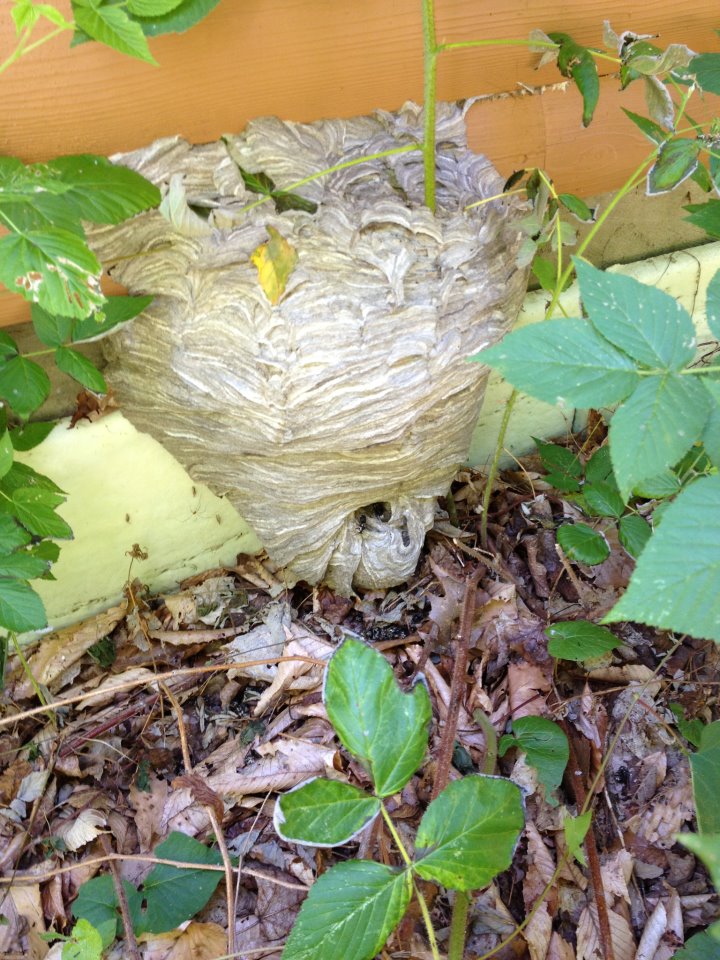If you have seen small flies or gnat-like insects in your kitchen, odds are they are most likely fruit flies. Fruit flies are a year-round issue; however, they are especially common during late summer and fall months. This is primarily because they are most attracted to ripe, fermenting (rotting) fruits and vegetables. Fruit flies have oval bodies with six legs. Adults are about 1/8 inch in size and usually have red eyes. The front section of the body is tan, and the rear part is black. They feed on decaying food items, especially fruits and vegetables.
Melons, tomatoes, grapes, squash, and other perishable items from the garden are often the cause of an indoor infestation. Fruit flies thrive on rotting, unrefrigerated produce from the supermarket as well.
Biology
We find fruit flies most commonly in homes, restaurants, grocery stores, and wherever food can rot. Female fruit flies lay their eggs near the surface of rotting foods or on other moist, organic materials. Upon hatching, the small larvae continue to feed near the surface of the rotting item. This surface-feeding characteristic is significant; the affected over-ripe parts of the vegetables and fruits may be cut away without having to discard the entire piece out of fear of containing any developing larvae. Fruit flies reproduce like wildfire, notorious for laying up to 500 eggs at any given time! The entire lifecycle from egg to adult completes within seven days. All that is necessary for development is a moist film of fermenting material.
Behavior
Though fruit flies are especially attracted to ripened fruits and vegetables in the kitchen or pantry, they will also breed in trash cans, drains, garbage disposals, empty bottles and cans, mops, and cleaning rags. Infestations can enter the home via previously rotting or fermenting fruits and vegetables, or empty bottles and cans.
That being said, adults can also fly in from outside through windows and doors with inadequate screens. For those who live or work near orchards, even the cleanest home may still experience a fruit fly issue due to all of the rotting fruit. One of the best and most straightforward solutions is to keep a fan blowing at the most frequently used door. This works toward keeping the flies outside because, due to their tiny stature, they are unable to fly against the force of the wind.
This trick actually works with most fly species because they aren’t strong enough to fly against the blowing air. The primary issue associated with fruit flies is that they are nuisance pests. However, their excrement also has the potential to contaminate food with their bacteria and other disease-producing organisms.
Prevention
The most effective method to avoid a fruit fly infestation is to eliminate sources of attraction. Produce should be eaten, discarded, or refrigerated upon ripening. Cracked, bruised, or otherwise damaged portions of fruits and vegetables should be cut away and dumped– especially if eggs or larvae are present in the affected area. A single rotting potato or onion at the back of a pantry or sticky fruit juice under a refrigerator is breeding ground for thousands of fruit flies. In addition, full and unclean trash or recycling bins are also ideal locations.
People who can fruits and vegetables, or make their own beer, cider, or wine should ensure that the containers are well sealed. Otherwise, fruit flies will lay their eggs under the lid, and the tiny larvae will enter the container upon hatching. Equip windows and doors with tight-fitting (16 mesh) screens to help prevent adult fruit flies from entering from outdoors.
Eradication
Once a structure is infested with fruit flies, all potential breeding areas must be located and eliminated. Unless the breeding sites are removed or cleaned, the problem will continue no matter how often one applies insecticides. Finding the source(s) of attraction and breeding can be very challenging and usually will require much thought and persistence. We often suggest personal eradication attempts right off the bat because a small infestation can be easy to nip in the bud. Potential breeding sites that are not easily accessible to humans (i.e., garbage disposals and drains) can be inspected by taping a clear plastic food storage bag over the opening overnight. If flies are breeding in these areas, the adults will emerge and enter the container.
A better approach, however, is to construct a trap by placing a paper funnel (or roll a sheet of notebook paper) into a jar that contains a few ounces of cider vinegar. Place the jar trap(s) wherever fruit flies are buzzing about. This simple but effective trap will soon catch any remaining adult flies which can then be killed or released outdoors.
If you exhaust your personal attempts and still can’t seem to shake a fruit fly problem, Hogarth’s can inspect your property and assist in eradicating the issue completely.
 Bees, wasps, yellow jackets and hornets are one of the most common pest control issues we deal with at Hogarth’s Pest Control. Stinging insects are often unwelcome summer guests, nesting on homes, in trees, under decks and even underground. Though all stinging insects have multiple similarities, each have individual qualities that differentiate them.
Bees, wasps, yellow jackets and hornets are one of the most common pest control issues we deal with at Hogarth’s Pest Control. Stinging insects are often unwelcome summer guests, nesting on homes, in trees, under decks and even underground. Though all stinging insects have multiple similarities, each have individual qualities that differentiate them.